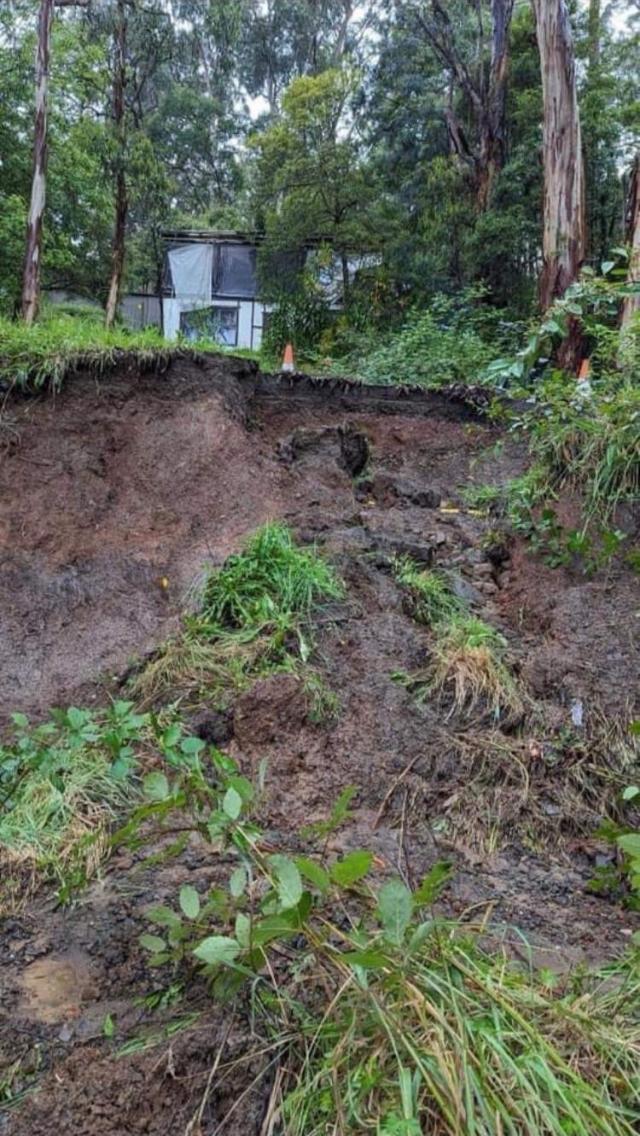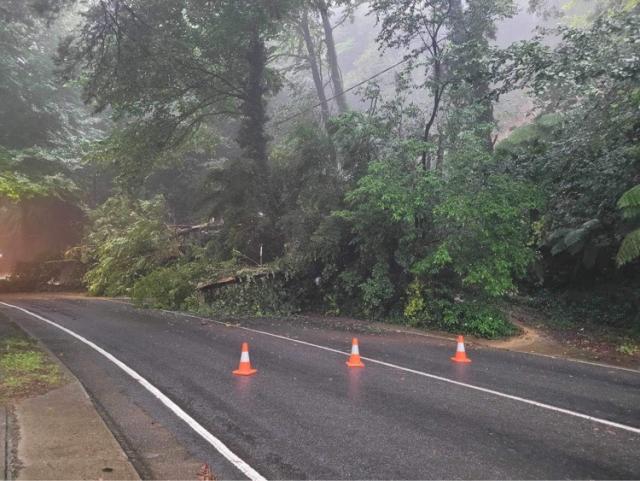Emergency services were out in force early in the week as heavy rain hit the Yarra Ranges.
A landslide on Mount Dandenong Tourist Road in Ferny Creek, approximately 40 metres wide and 70 metres long, has seen several nearby houses evacuated and the road between Churchill Drive and Mast Gully Road is set to be closed for some time, according to VicEmergency.
Two active landslips on Belgrave-Gembrook Road near Nation Road and near Clematis Street in Selby have forced the closure of the main arterial.
The Department of Transport and Planning’s road maintenance team and Victoria Police have assessed the area and determined Belgrave-Gembrook Road needs to be fully closed between Belgrave and Selby for the safety of the community, the Department of Transport and Planning has said.
Victoria SES’s chief operations officer Tim Wiebusch said on Tuesday 9 January two geotechs have been working with the emergency service incident management team who have identified several trees that will need to be removed by specialist arborists, as well as earthworks that will occur over the coming days.
“Preliminary assessments are that it could take up to a week to stabilise that area around the landslide,” Mr Wiebusch said.
“In that vicinity there are a number of homes and in particular two residential property owners were relocated by council last night [Monday 8 January] to alternate accommodation.”
Emerald’s SES Unit responded to 49 requests for assistance over the past day; mostly for tree down traffic hazard incidents across the region.
No one has been injured.
Motorists are advised to detour via Belgrave-Hallam Road and Wellington Road, with the department set to keep the community updated when the road can be reopened.
Route 695 and 695F buses are also impacted by the road closures, with people advised to visit the PTV website to plan their public transport journey.
Senior meteorologist at the Bureau of Meteorology, Christie Johnson, said the highest recorded rainfall in the state from the 48 hours from Sunday 7 January was in areas including Heathcote in central Victoria, with the rain gauge in Ferny Creek detecting 124.4 millimetres of rain over the same time period.
Nearby, The Bureau’s Spring Road Monbulk site detected 116.2 millimetres of rain with its other Monbulk site detecting 108 millimetres.
“Our rain gauge at Lillydale Lake had 99.4, Mount Evelyn had 97.4, Coldstream had 86.4; a lot of places being over 100 millimetres and some of that did fall in reasonably short periods of time with thunderstorms,” Ms Johnson said.
“For example in Monbulk we had 56.6 millimetres fall in three hours from about midnight to 3am on Monday morning [8 January] [and] Coldstream saw 41 millimetres in three hours, Mount Dandenong saw 50 millimetres in three hours, Mount Evelyn saw 45mm in three hours and Ferny Creek saw 47mm in three hours.
“The intensity of the rainfall probably also contributed to the impact.”
Despite the thunderstorms, Ms Johnson said there may be some showers in the Dandenongs the week ending Sunday 14 January but “nothing like we’ve seen” over the past two days.
“In terms of looking forward for the rest of summer, long term climate outlooks for the Melbourne and the Dandenongs area are not showing a strong signal towards either wet or dry, but average conditions,” she said.
“Part of the reason we’ve been seeing these sort of thunderstorm outbreaks is because we have very warm sea surface temperatures off the east coast at the moment, so anytime we get easterly winds, those are bringing very humid tropical air over Victoria, which is why we’re getting thunderstorms that are probably more reminiscent of what you get in Queensland with that tropical air.”
It was too late to leave Rochester on Tuesday, with an emergency warning in place and the Campaspe River above the major flood level (114.5m).
Ms Johnson said there was a record at The Bureau’s site in Coldstream, which has been open for 31 years, with its highest average daily rainfall reaching 76.2 millimetres to 9am on Monday.
It was a January record in Ferny Creek, with 77 millimetres hitting the area in 24 hours.
“There were quite a lot of records [across Victoria]. It would be unusual for us to see multiple record breaking rainfalls events in the one month,” she said.
“We’re probably not expecting anything of the same order as what we saw in the last 24 hours or 48 hours.”
More information on road closures near you can be found at traffic.vicroads.vic.gov.au.
Residents are encouraged to stay safe by avoiding damaged buildings, fallen trees and powerlines, blocked or damaged roads.








